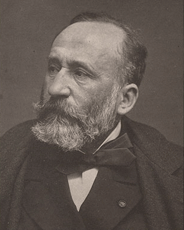피에르 퓌뷔 드 샤반(Pierre Puvis de Chavannes)FOLLOW
1824년12월14일 프랑스 리옹 출생 - 1898년10월24일

수상경력
1941년 Wilhem Van Hasselt
1944년 Jean Gabriel Domergue
1952년 Tristan Klingsor
1955년 Georges Delplanque
1957년 Albert Decaris
1958년 Jean Picard Le Doux
1963년 Maurice Boitel
1966년 Pierre Gaillardot
1968년 Pierre-Henry
1969년 Louis Vuillermoz
1970년 Daniel du Janerand
1971년 Jean-Pierre Alaux
1975년 Jean Monneret
1987년 Andre Hambourg
추가정보
He was born Pierre-Cecile Puvis de Chavannes in Lyon, Rhone, France, the son of a mining engineer, descendant of an old noble family of Burgundy. Pierre Puvis was educated at the Lyons College and at the Lycee Henri IV in Paris, and was intended to follow his father's profession when a serious illness interrupted his studies. A journey to Italy opened his mind to fresh ideas, and on his return to Paris in 1844 he announced his intention of becoming a painter, and went to study first under Eugene Delacroix, Henri Scheffer, and then under Thomas Couture. It was not until a number of years later, when the government of France acquired one of his works, that he gained wide recognition.
In Montmartre, he had an affair with one of his models, Suzanne Valadon, who would become one of the leading artists of the day as well as the mother, teacher, and mentor of Maurice Utrillo.
His work is seen as symbolist in nature, even though he studied with some of the romanticists, and he is credited with influencing an entire generation of painters and sculptors. One of his proteges was Georges de Feure.
Puvis de Chavannes is noted for painting murals, several of which may be seen at the Hotel de Ville (City Hall) in Paris, the Sorbonne, and the Paris Pantheon, and at Poitiers, as well as at the Boston Public Library in the United States.
Puvis de Chavannes was president and co-founder in 1890 of the Societe Nationale des Beaux-Arts (National Society of Fine Arts) founded in Paris. It became the dominant salon of art at the time and held exhibitions of contemporary art that was selected only by a jury composed of the officers of the Societe.
Those who translated best the spirit of the work of Pierre-Cecile Puvis de Chavannes' in their own creations were, in Germany, the painter Ludwig von Hofmann and in France, Auguste Rodin.
